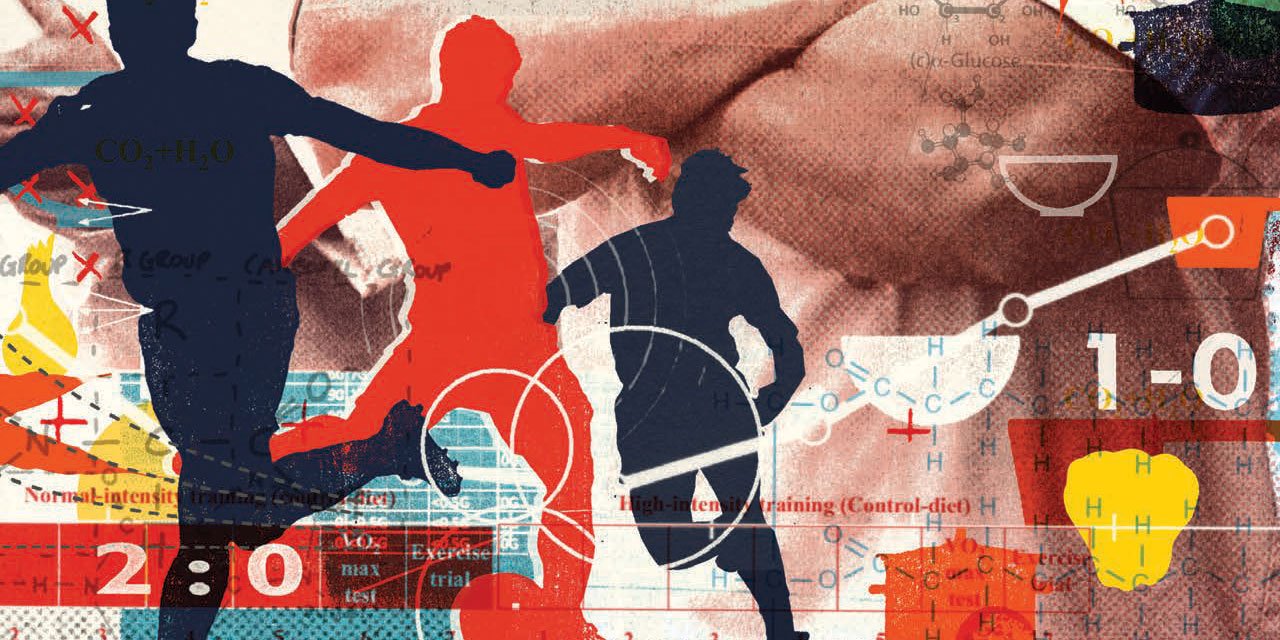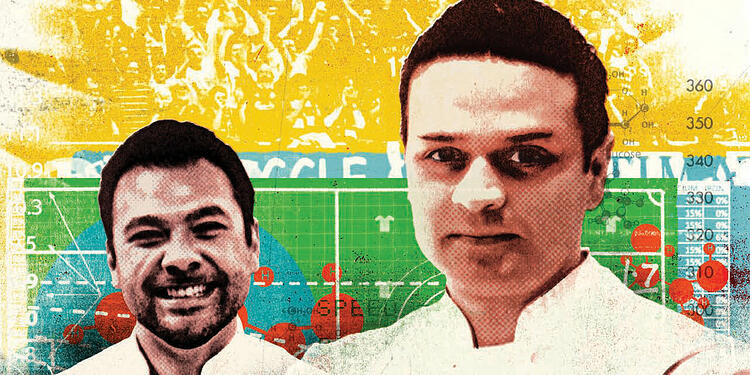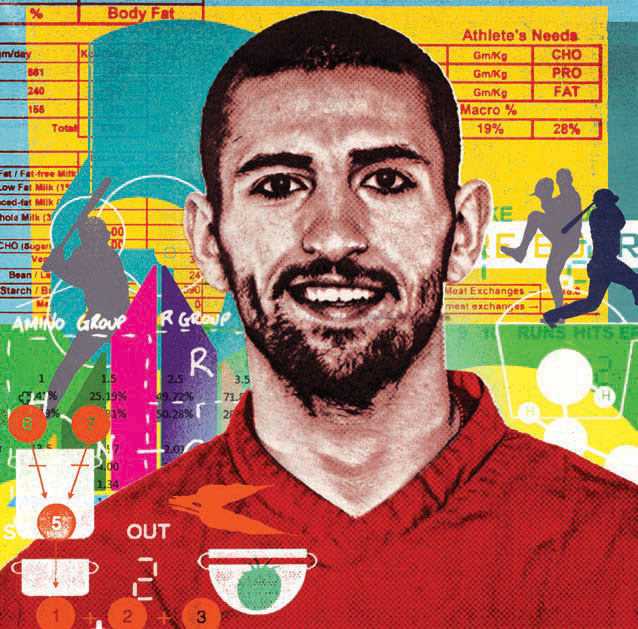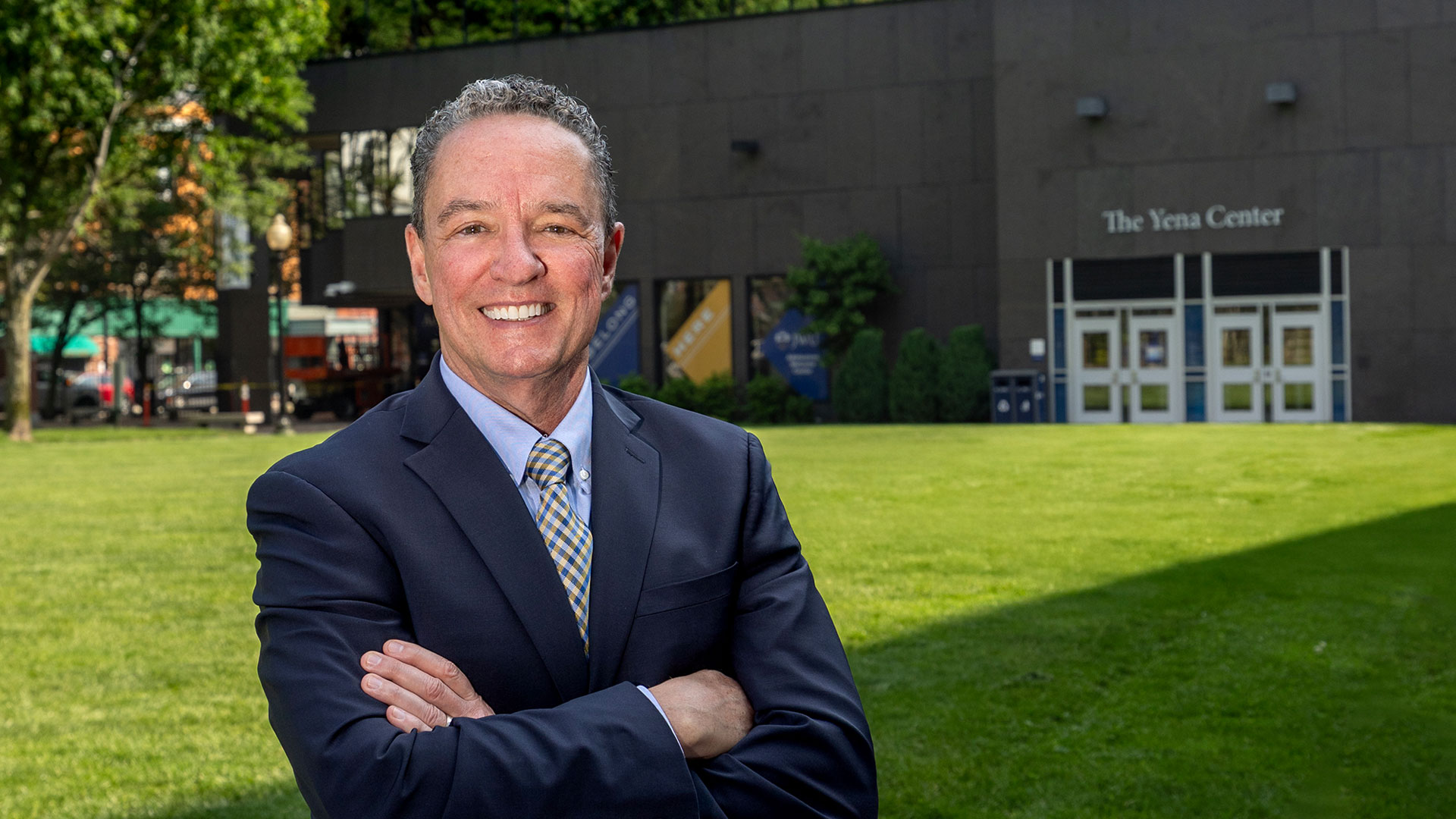The Winning Edge: JWU Sports Nutritionists Fuel Pro Athletes

For JWU alumni working in sports nutrition, fueling professional athletes is a high-stakes game. Secret sauces, camo vegetables and fake “fried” chicken are tricks of the trade.
For these chefs, the secret’s not just in the sauce.
The secret is also hidden in Chef Bryson Billapando’s Power Balls.
And Chef Varun Shivdasani has concealed the secret in his tantalizing marinades.
Meanwhile, if you ask Chef Simon Lusky the right questions, you’ll discover that he’s put the secret in his it’s-so-crispy-it-can’t-be-baked “fried” chicken.
These chefs’ secret?
Their dishes are actually (gasp!) gastronomically disguised health food, designed to provide the professional athletes they feed with optimum nutrients to maximize performance and — hopefully — give their teams the winning edge.
Billapando ’12, Shivdasani ’02 and Lusky ’10 — along with other JWU culinary nutrition grads — are uniquely positioned to tackle the challenge of designing health food that will be scarfed down by even the most fervent junk food junkie.
“The science is very well hidden in the food,” explains Billapando, executive chef for the United States men’s national soccer team (USMNT). “It’s like feeding kids. You’re hiding the vegetables.”
Billapando joined USMNT in 2014, coming on board as the team’s first traveling chef. He immediately put his distinctive mix of culinary skills and nutritional smarts to work — and not just at meal times.
Sideline snacks — so essential in soccer to keep players energized for 90 minutes of sprints up and down the pitch — needed serious attention. “Peanut butter and jelly and fruit were not working. No one wants soggy bread,” says Billapando. Cue up the Power Balls: “They’re loaded with flax seed and oatmeal; the players just eat the heck out of them.
But Billapando is careful to make sure that his focus on ingredients doesn’t block the meal’s appeal. “I learned that there’s a psychology of food. I take a healthy recipe and jazz it up with a name.”
Underpinning these chefs’ understanding of the vital role that nutrient science plays in athletic performance is their awareness that the foods most athletes like are a world away from nouveau cuisine, never mind alfalfa sprouts and tofu.
"It’s 100% science. When you’re dealing with sports it has to be. Then the chef kicks in."
His goal? “How can I take comfort food — some of the unhealthiest food — and make it healthy again and make it interesting? And make people want to eat it. How can I make players love it — and perform at a higher level?”
Billapando is well positioned to score. JWU’s culinary nutrition program provides a carefully balanced blend of nutritional science and chef know-how.
The brainchild of since-retired nutrition professor Suzanne Vieira, the program was launched in 1999 to bridge the widening divide between the worlds of dietetics and culinary arts. Chef Todd Seyfarth ‘01, department chair at the Providence Campus, recalls Vieira’s concept: “It was brilliant in its simplicity: ‘What if we taught chefs to be nutritionists?’”
By that time, explains Seyfarth, nutrition education had migrated far from its roots. “It had been much more food focused. Then, dietitians started to thin out more and more of the food and bring in more and more of the science.”
While Seyfarth is happy to credit the essential role science plays — “I was definitely on the nerdy side. I loved the science aspect of cooking” — he emphasizes that nutrient knowledge alone does not make a winning recipe. “If you don’t know how to put that into a menu, it really is a worthless thing.”

BRYSON BILLAPANDO '12 AND VARUN SHIVDASANI '02. PHOTO-ILLUSTRATION BY ALEX WILLIAMSON.
A PIONEER IN THE FIELD
The interplay between culinary arts and nutrition is what makes JWU’s program unique and sets its graduates apart.
Both Seyfarth and Professor Marleen Swanson, department chair at the Denver Campus, are quick to point out that the Culinary Nutrition degree is the first in the country to provide a foundation in the culinary arts and accreditation by the Academy of Nutrition and Dietetics. Swanson, a dietitian who also holds a Grand Diploma from Le Cordon Bleu Paris, notes that such dual expertise is sought after by employers: “That’s why they love our students — they know the science and the food.”
The program has seen robust growth, with Providence’s running at capacity and Denver’s welcoming a record number of off-term students entering this winter. Demand, says Swanson, is fueled by the desire for food-based approaches to preventing and managing disease — a need that in 2014 helped the Denver Campus snag a $100,000 grant to expand state-of-the-art lab facilities for the campus’s Center for Culinary Nutrition.
“We’ve been able to add phenomenal equipment,” says Swanson. “I did a lot of shopping last summer. It was fabulous fun.”
In addition to Billapando, Lusky and Shivdasani, Swanson and Seyfarth list a Who’s Who of graduates working as sports nutritionists across a range of settings: at universities, for the military and for professional teams, including Nick Arcuri ’14 with the Memphis Grizzlies, Adam Korzun ’03 with the Green Bay Packers, Stephen Smith ’09 with the Houston Texans and Shawn Zell ’10 with the Milwaukee Bucks.
Teams now see menu offerings as supporting player performance. “They truly are seeing that it does make a difference in their ability to function,” says Swanson. “And yet they still want good food.” Culinary nutrition graduates’ combination of culinary artistry and science smarts can bring about that food alchemy.
CUSTOMIZED NUTRITION
Fried chicken, says Lusky, who is starting his sixth season as team chef for the St. Louis Cardinals, is a baseball tradition.
“Every third day, people were bringing in fried chicken. For a couple years, I really tried to find something.” Eventually, he hit upon a winning formula, discovering that brining, buttermilk and cornflake crumbs — racked the right way and served with sweet potato casserole — equal magic: “I’ve had guys who say, ‘It’s not baked, it’s fried.’ I feel like it’s something that hits home. Everybody, from all walks of life — from Georgia to Cuba — can relate.”
As far as the players in the clubhouse are concerned, they are tucking into the unadulterated lip-smacking flavors of baseball. But Lusky’s quest also focused on the underlying science and making sure that his “fried” chicken provides whole foods and the optimal ratio of macronutrients: carbohydrates, proteins and fats.
Indeed, a conversation with these chefs quickly veers from the recipe sheet into a text on biochemistry.
“It’s 100% science,” explains Shivdasani. “When you’re dealing with sports it has to be. Then the chef kicks in.”
On the other side of the Atlantic, Shivdasani spent the last four seasons as the culinary nutritionist and chef for England’s Norwich City Football Club. He saw the Canaries make a triumphant return to professional soccer’s elite Premier League by winning last May’s championship match at Wembley Stadium, in front of a near sell-out crowd of more than 85,000 fans.
“I’m not saying it’s all down to me,” cautions Shivdasani. “I can’t isolate nutrition.” Like Billapando and Lusky, he emphasizes that he is one among many on the support roster — and that he partners with trainers, medical staff and others to give the athletes every possible advantage. “The method is to get as much data as possible, whether it’s from strength and conditioning, from GPS or from the athletes’ food recalls.”
To design customized support, Shivdasani pairs such information with his knowledge of the roles different nutrients play. “If you’re a winger who’s running loads, versus a goalkeeper, your nutrition is going to be totally different.
“For a winger, I would load up their carbs quite a bit to fuel them. For the goalkeeper, their movement is explosive, and I would emphasize creatine-rich food. I would also encourage more omegas and things that are going to heighten their awareness — the botanicals, like ginkgo biloba.”
Veteran players, who may be feeling twinges of the onset of age, are the most enthusiastic about improving their nutrition — especially if it suits their tastes. Shivdasani quickly learned to calibrate his own foodie tendencies, an asset in such previous venues as high-end spas and the Mumbai edition of “The Biggest Loser,’’ with the soccer squad’s fish-and-chip palates. Early days with the Canaries, he recalls thinking: “‘I’m going to do a Moroccan tagine. It’s going to be brilliant!’ Without considering the fact that 60% of the team are British. They’re not going to like spicy food.”
Data from the training room, such as body composition tests, bolster players’ own reports of improved strength and energy. “‘My body composition has come back 4-5% lower in fat, and I haven’t changed anything!’” Lusky recalls one baseball player exclaiming. Nutritional improvements had been hidden in the player’s clubhouse favorites.
The possibility for a performance boost through food is especially powerful in the current climate. “I think that in general, in all sports now, testing is more stringent,” observes Lusky. “There are really crazy products out there. You never know what you’re going to get. Honestly, it’s so much safer to eat food, and the right amounts of it.”
This acute understanding of the synergy possible through science and cuisine — and the expertise to make the most of it — is notable among all three chefs, for which they credit JWU’s culinary nutrition coursework.
DISCOVERING THEIR CALLING
For Lusky, the program’s science classes brought about an epiphany: “I barely made it out of high school. I barely passed math or science.” Getting started in the university’s organic chemistry course, Lusky was worried: “The first couple weeks, I was really having a hard time. Then, the teacher started taking the core — the periodic table and bonds — and bringing it full circle to food. I went from almost failing to getting my one and only B.” His newfound understanding was a lightning bolt, and Lusky went on to earn straight As in science. “Wow! It made me almost want to go back and take that organic chemistry course again!”
"How can I take comfort food and make it healthy + interesting?"
For Billapando, JWU’s program offered an irresistible challenge. The seed had been planted when he visited the Denver Campus with his then-wife, who was getting ready to attend. At that time, the facilities and equipment impressed. “This is really cool,” he thought.
Eventually, after trying out careers in physical therapy and firefighting, he was back, this time as a student. Chef-faculty encouraged him to pursue the four-year degree: “‘You need to do nutrition,’” he recalls them saying, “‘because it’s hard. It’s the hardest degree here.’”
That incentive was a sweet carrot: “It was really hard,” says Billapando, “and it made me want to excel.” In rising to the challenge of the coursework, he discovered a natural aptitude: “I just understood things. The food science and sports science made so much sense to me. I had a knack for it.”
At this point in their careers, the chefs speak with confidence of their ability to secretly embed a potent nutrient blend within delicious dishes.
“I understand how to balance things out,” notes Billapando, “which chemicals work better and taste better. I would break it down molecularly to understand it and make something out of it. I would take recipes and deconstruct them ... and it just kind of never stops.”
Off the soccer field, Shivdasani stands poised to begin his own sports-nutrition venture, Training Table Academy, which will offer nutrition training to working chefs.
Recalling the various stops along his professional pathway, he sums up, “I’m at a point where I can make something really healthy taste really good. I know what works. The methods are the same whether using them for spas, for ‘The Biggest Loser,’ for cricket or football.”
Lusky echoes both alumni: “Now that I have a really good grasp, I can walk into a kitchen and look at a dish — and it looks like the matrix to me. I can manipulate food so it makes sense nutritionally and taste-wise.”
In addition to donning his team toque, Lusky is busy putting his powers to work outside the stadium, in his newly named, St. Louis-based Revel Kitchen. The company — which includes catering, a food truck, a cafe and a restaurant — was originally called Athlete Eats. But that moniker did not recognize the wider demand for tasty, healthy food. “I’m not having swarms of people in gym clothes,” Lusky quickly realized. “I’m getting regular people in here.”
It should come as no surprise, he reflects: “Athletes are the trendsetters. They drive the cool cars, wear the cool clothes, before anyone else does.” So it makes sense that they’re a bellwether for food preferences, too. And, of course, the chef is committed to satisfying that appetite: “I want people to revel in eating well. I want people to eat healthy food, and I want them to enjoy it.”
This article originally appeared in the Winter 2016 issue of JWU Magazine.
SIMON LUSKY '10. PHOTO-ILLUSTRATION BY ALEX WILLIAMSON.




